Investigation of Copper-Less Gas Electron Multiplier Detectors Responses to Soft X-rays
Abstract
1. Introduction
2. Materials and Methods
2.1. Copper-Less GEM Detectors
2.2. Test Set-Up and Test Procedures
2.2.1. Detector Readout System
2.2.2. Measurement Procedure
2.2.3. Gas Gain and Energy Resolution Maps Across Detector Area
2.2.4. Detailed Analysis of Energy Spectra and Energy Resolution
2.2.5. Gas Gain and Energy Resolution vs. Detector Bias Voltage
2.2.6. Long Term Stability of the Gas Gain
3. Results and Discussion
3.1. GEM Detector with 10 nm Chromium-Clad Foils
3.2. Detector with 10 nm Chromium-Clad GEM Foils and 5 µm Aluminum-Clad Drift Electrode
3.3. GEM Detector with 100 nm Chromium-Clad Foils
3.4. GEM Detector with 100 nm Chromium-Clad Foils with Various Copper Grid Layouts
3.5. GEM Detector with Standard Copper-Clad Foils
3.6. Long-Term Studies of Selected Detectors
4. Conclusions
Author Contributions
Funding
Acknowledgments
Conflicts of Interest
Abbreviations
| ASIC | Application Specific Integrated Circuit |
| DAQ | Data Acquisition |
| FPGA | Field-Programmable Gate Array |
| FWHM | Full Width at Half Maximum |
| GEM | Gas Electron Multiplier |
| MPGD | Micro-Pattern Gaseous Detectors |
| TMA | Trimethylamine |
| XRF | X-Ray Fluorescence |
References
- Adler, K.; Piikki, K.; Sderström, M.; Eriksson, J.; Alshihabi, O. Predictions of Cu, Zn, and Cd Concentrations in Soil Using Portable X-Ray Fluorescence Measurements. Sensors 2020, 20, 474. [Google Scholar] [CrossRef] [PubMed]
- Borges, C.S.; Weindorf, D.C.; Carvalho, G.S.; Guilherme, L.R.G.; Takayama, T.; Curi, N.; Lima, G.J.E.O.; Ribeiro, B.T. Foliar Elemental Analysis of Brazilian Crops via Portable X-ray Fluorescence Spectrometry. Sensors 2020, 20, 2509. [Google Scholar] [CrossRef] [PubMed]
- Dik, J.; Janssens, K.; Van Der Snickt, G.; van der Loeff, L.; Rickers, K.; Cotte, M. Visualisation of a Lost Painting by Vincent van Gogh Using Synchrotron Radiation Based X-ray Fluorescence Elemental Mapping. Anal. Chem. 2008, 80, 6436–6442. [Google Scholar] [CrossRef] [PubMed]
- Alfeld, M.; De Nolf, W.; Cagno, S.; Appel, K.; Siddons, D.; Kuczewski, A.; Janssens, K.; Dik, J.; Trentelman, K.; Walton, M. Revaling hidden paint layers in oil paintings by means of scanning macro-XRF: A mock-up study based on Rembrandt’s “An old man in military costume”. J. Anal. At. Spectrom. 2013, 28, 40–51. [Google Scholar] [CrossRef]
- Zielińska, A.; Dąbrowski, W.; Fiutowski, T.; Mindur, B.; Wiącek, P.; Wróbel, P. X-ray fluorescence imaging system for fast mapping of pigment distributions in cultural heritage paintings. J. Instr. 2013, 8, P10011. [Google Scholar] [CrossRef]
- Romano, F.P.; Caliri, C.; Cosentino, L.; Gammino, S.; Giuntini, L.; Mascali, D.; Neri, L.; Pappalardo, L.; Rizzo, F.; Taccetti, F. Macro and Micro Full Field X-Ray Fluorescence with an X-Ray Pinhole Camera Presenting High Energy and High Spatial Resolution. Anal. Chem. 2014, 86, 10892–10899. [Google Scholar] [CrossRef]
- Romano, F.P.; Caliri, C.; Nicotra, P.; Di Martino, S.; Pappalardo, L.; Rizzob, F.; Santosb, H.C. Real-time elemental imaging of large dimension paintings with a novel mobile macro X-ray fluorescence (MA-XRF) scanning technique. J. Anal. At. Spectrom. 2017, 4, 773–781. [Google Scholar] [CrossRef]
- Alfeld, M.; de Viguerie, L. Recent developments in spectroscopic imaging techniques for historical paintings—A review. Spectrochim. Acta Part B 2017, 136, 81–105. [Google Scholar] [CrossRef]
- Sauli, F. GEM: A new concept for electron amplification in gas detectors. Nucl. Instrum. Methods Phys. Res. A 1997, 386, 531. [Google Scholar] [CrossRef]
- Sauli, F. Development and applications of gas electron multiplier detectors. Nucl. Instrum. Methods Phys. Res. A 2003, 505, 195. [Google Scholar] [CrossRef]
- Titov, M. New developments and future perspectives of gaseous detectors. Nucl. Instrum. Methods Phys. Res. A 2007, 581, 25. [Google Scholar] [CrossRef][Green Version]
- Sauli, F. The gas electron multiplier (GEM): Operating principles and applications. Nucl. Instrum. Methods Phys. Res. A 2016, 805, 2. [Google Scholar] [CrossRef]
- Nappi, E.; Peskov, V. Imaging Gaseous Detectors and Their Applications; Wiley-VCH Verlag GmbH & Co. KGaA: Weinheim, Germany, 2013. [Google Scholar]
- Sauli, F. Radiation imaging with gaseous detectors. Nucl. Instrum. Methods Phys. Res. A 2018, 878, 1. [Google Scholar] [CrossRef]
- Altunbas, C.; Capéans, M.; Dehmelt, K.; Ehlers, J.; Friedrich, J.; Konorov, I.; Gandi, A.; Kappler, S.; Ketzer, B.; De Oliveira, R.; et al. Construction, test and commissioning of the triple-GEM tracking detector for COMPASS. Nucl. Instrum. Methods Phys. Res. A 2002, 490, 177. [Google Scholar] [CrossRef]
- Bagliesi, M.G.; Berretti, M.; Brucken, E.; Cecchi, R.; David, E.; Garcia, F.; Greco, V.; Heino, J.; Hilden, T.; Kurvinen, K.; et al. The TOTEM T2 telescope based on triple-GEM chambers. Nucl. Instrum. Methods Phys. Res. A 2010, 617, 134. [Google Scholar] [CrossRef]
- Abbaneo, D.; Abbrescia, M.; Akl, M.A.; Armaingaud, C.; Aspell, P.; Assran, Y.; Bally, S.; Ban, Y.; Banerjee, S.; Barria, P.; et al. Studies on the upgrade of the muon system in the forward region of the CMS experiment at LHC with GEMs. J. Instr. 2014, 9, C01053. [Google Scholar] [CrossRef]
- Gunji, T. Future upgrade and physics perspectives of the ALICE TPC. Nucl. Instrum. Methods Phys. Res. A 2014, 931, 1152. [Google Scholar] [CrossRef]
- Silva, A.L.M. A large area full-field EDXRF imaging system based on a THCOBRA gaseous detector. J. Anal. At. Spectrom. 2015, 30, 343. [Google Scholar] [CrossRef]
- Dąbrowski, W.; Fiutowski, T.; Frączek, P.; Koperny, S.; Lankosz, M.; Mendys, A.; Mindur, B.; Świentek, K.; Wiącek, P.; Wróbel, P.M. Application of GEM-based detectors in full-field XRF imaging. J. Instr. 2016, 11, C12025. [Google Scholar] [CrossRef]
- Silva, A.L.M.; Cirino, S.; Carvalho, M.L.; Manso, M.; Pessanha, S.; Azevedo, C.D.R.; Carramate, L.F.N.D.; Santos, J.P.; Guerra, M.; Veloso, J.F.C.A. Elemental mapping in a contemporary miniature by full-field X-ray fluorescence imaging with gaseous detector vs. scanning X-ray fluorescence imaging with polycapillary optics. Spectrochim. Acta Part B 2017, 129, 1. [Google Scholar] [CrossRef]
- Veloso, J.F.C.A.; Silva, A.L.M. Gaseous detectors for energy dispersive X-ray fluorescence analysis. Nucl. Instrum. Methods Phys. Res. A 2018, 878, 24–39. [Google Scholar] [CrossRef]
- Mindur, B. Micropattern Gaseous Detectors—New Developments and Applications. Acta Phys. Pol. B 2016, 47, 287. [Google Scholar] [CrossRef]
- Fujiwara, T.; Mitsuya, Y.; Toyokawa, H. Fine-pitch glass GEM for high-resolution X-ray imaging. J. Instr. 2016, 11, C12050. [Google Scholar] [CrossRef]
- Tessarotto, F. Evolution and recent developments of the gaseous photon detectors technologies. Nucl. Instrum. Methods Phys. Res. A 2018, 912, 278–286. [Google Scholar] [CrossRef]
- Hubbell, J.H.; Trehan, P.N.; Singh, N.; Chand, B.; Mehta, D.; Garg, M.L.; Garg, R.R.; Singh, S.; Puri, S. A Review, Bibliography, and Tabulation of K, L, and Higher Atomic Shell X-Ray Fluorescence Yields. J. Phys. Chem. Ref. Data 1994, 23, 339. [Google Scholar] [CrossRef]
- Mindur, B.; Fiutowski, T.; Koperny, S.; Wiącek, P.; Dąbrowski, W. Performance of a GEM detector with copper-less foils. J. Instr. 2017, 12, P09020. [Google Scholar] [CrossRef]
- Technology Transfer Agency Techtra. Available online: http://techtra.pl/en/technology/gem-foils/ (accessed on 7 May 2020).
- Fiutowski, T.; Dąbrowski, W.; Mindur, B.; Wiącek, P.; Zielińska, A. Design and performance of the GEMROC ASIC for 2D readout of gas electron multiplier detectors. In Proceedings of the 2011 IEEE Nuclear Science Symposium Conference Record, Valencia, Spain, 23–29 October 2011. [Google Scholar]
- Fiutowski, T.; Dąbrowski, W.; Koperny, S.; Wiącek, P. Integrated input protection against discharges for Micro Pattern Gas Detectors readout ASICs. J. Instr. 2017, 12, C02021. [Google Scholar] [CrossRef]
- Mindur, B.; Dąbrowski, W.; Fiutowski, T.; Wiącek, P.; Zielińska, A. A compact system for two-dimensional readout of Gas Electron Multiplier detectors. J. Instr. 2013, 8, T01005. [Google Scholar] [CrossRef]
- Mindur, B.; Fiutowski, T.; Koperny, S.; Wiącek, P.; Dąbrowski, W. DAQ software for GEM-based imaging system. J. Instr. 2018, 13, C12016. [Google Scholar] [CrossRef]
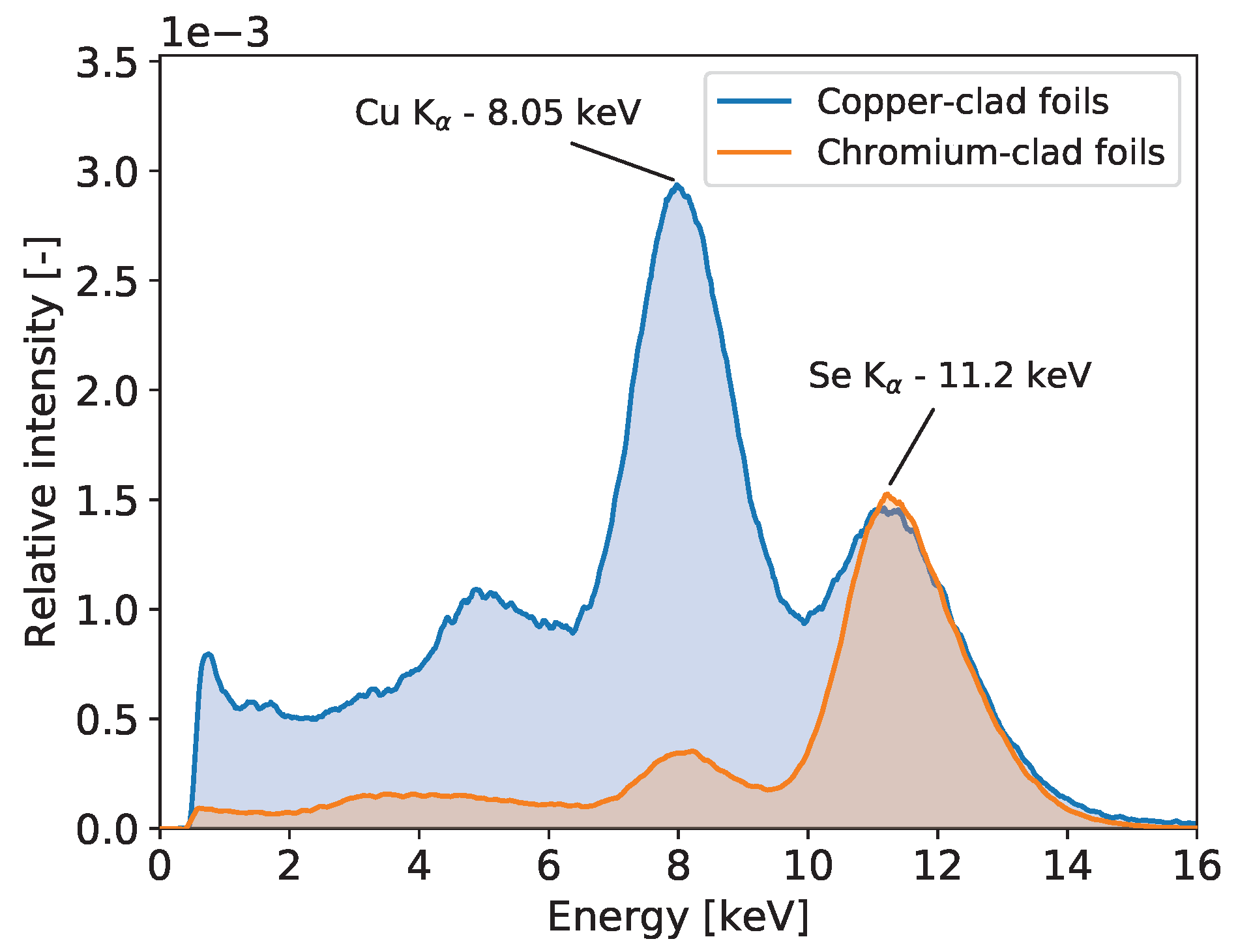
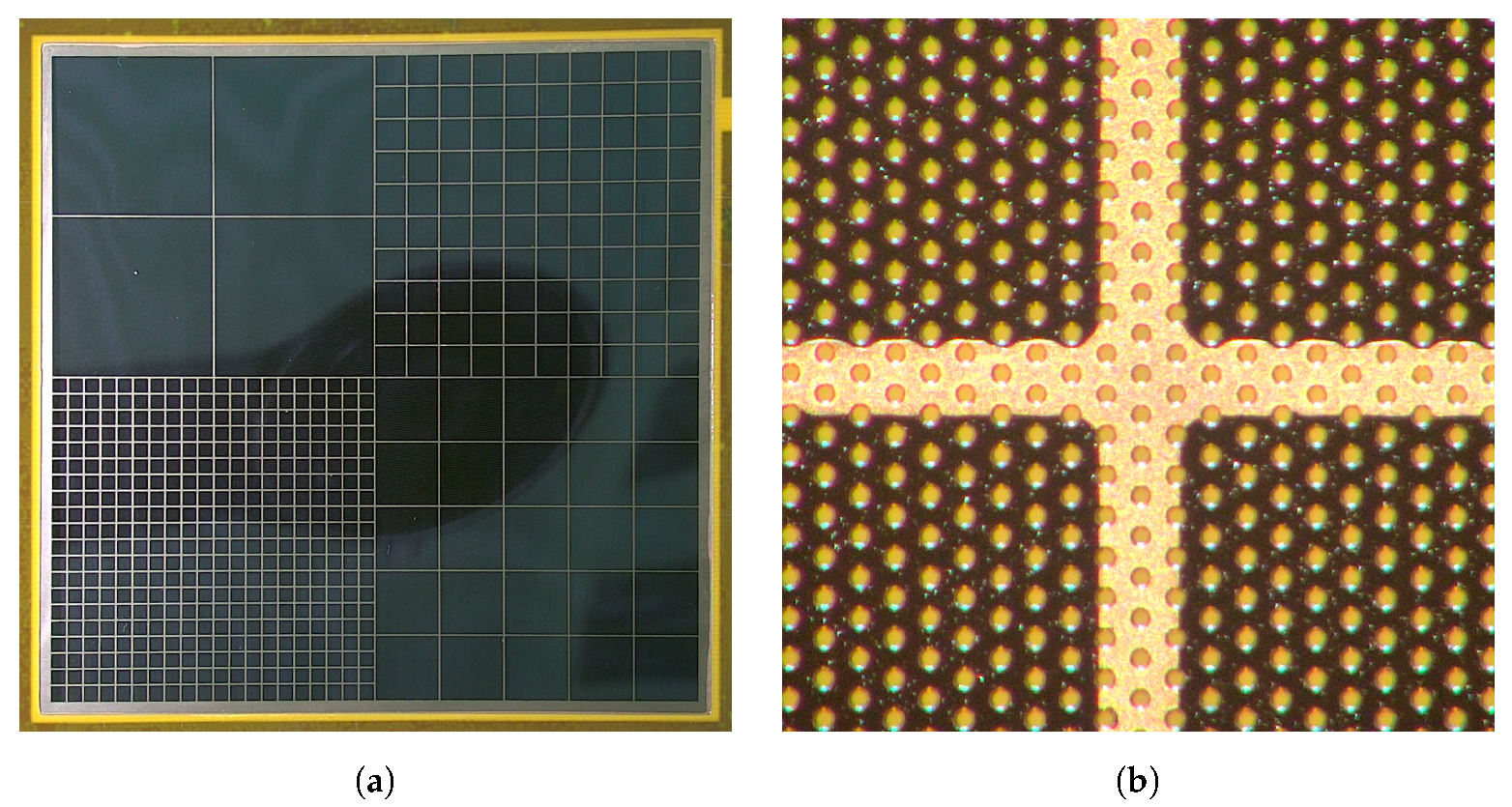
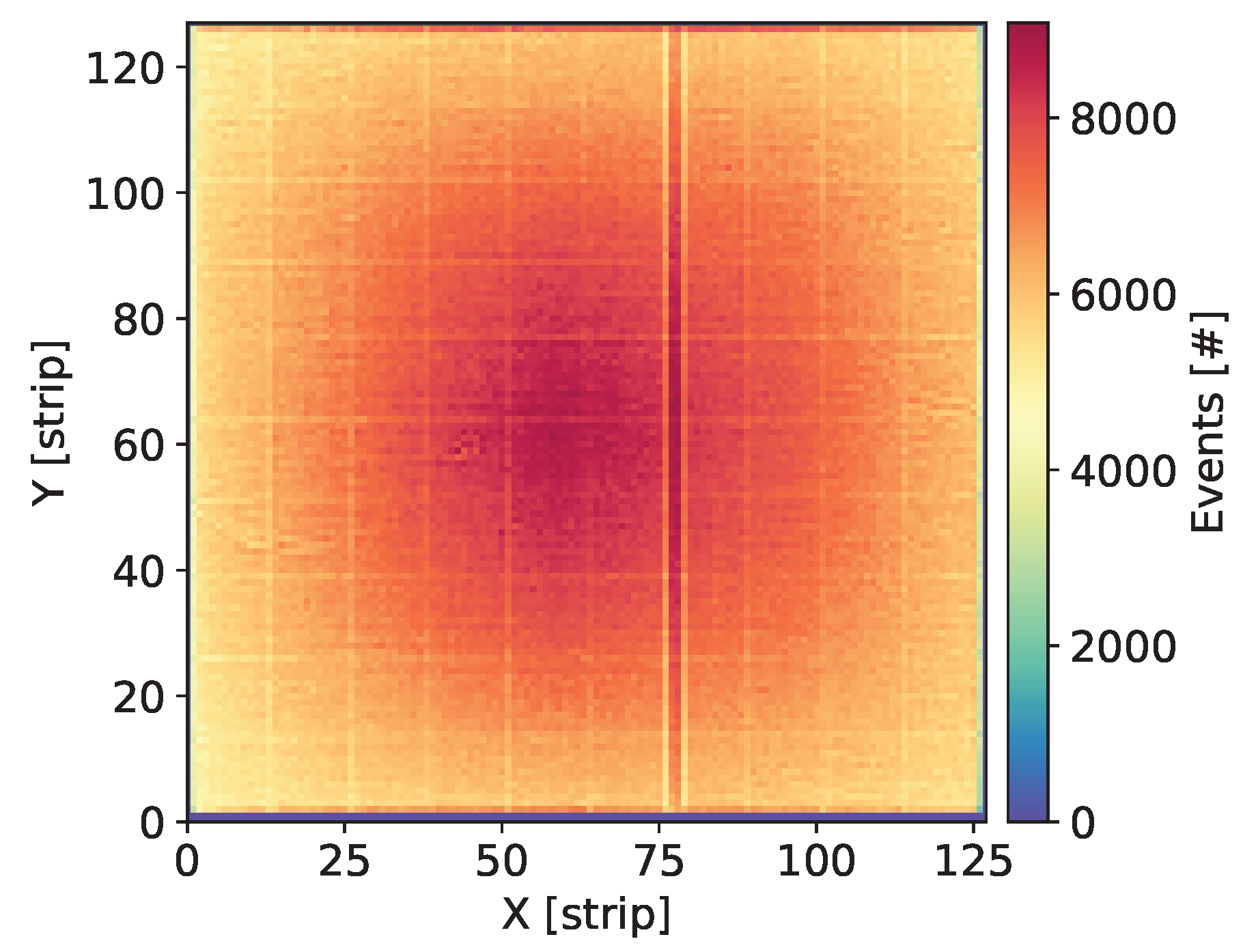
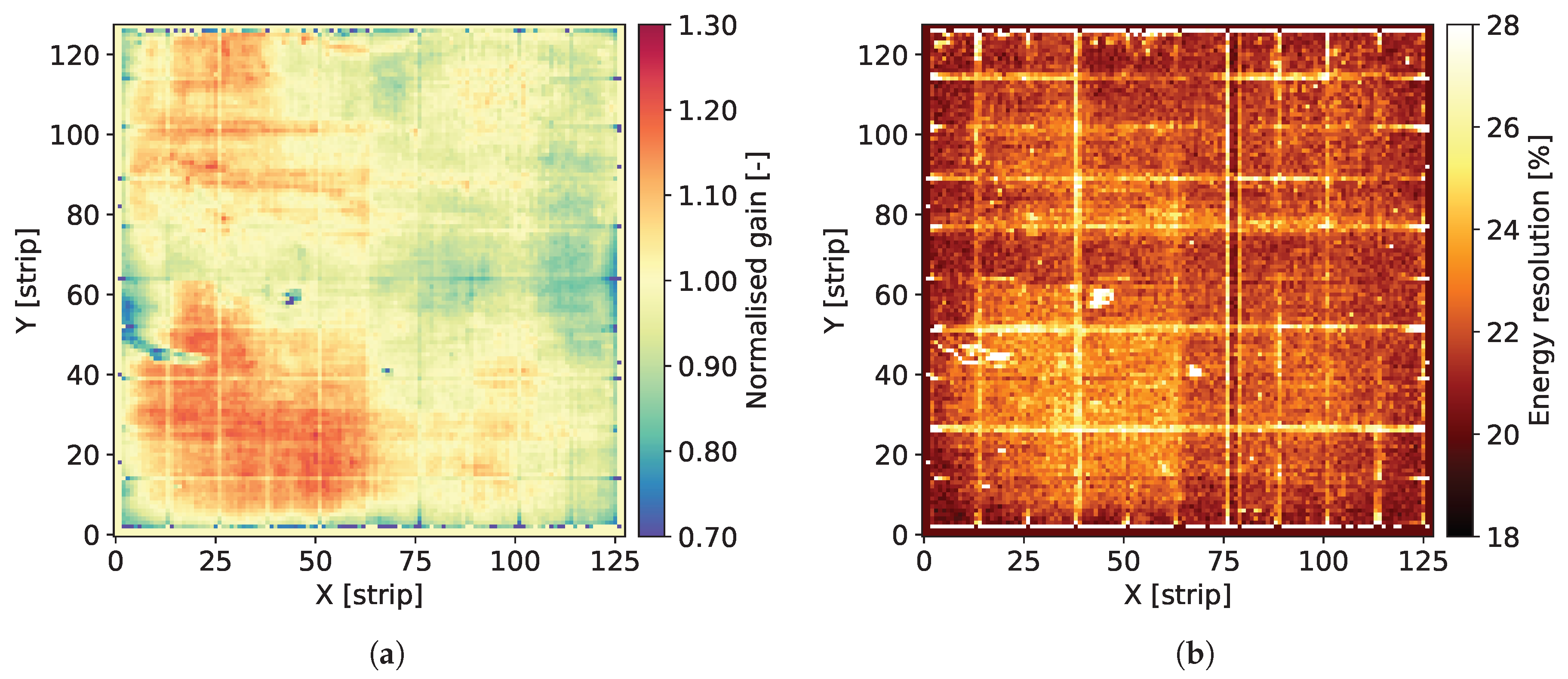
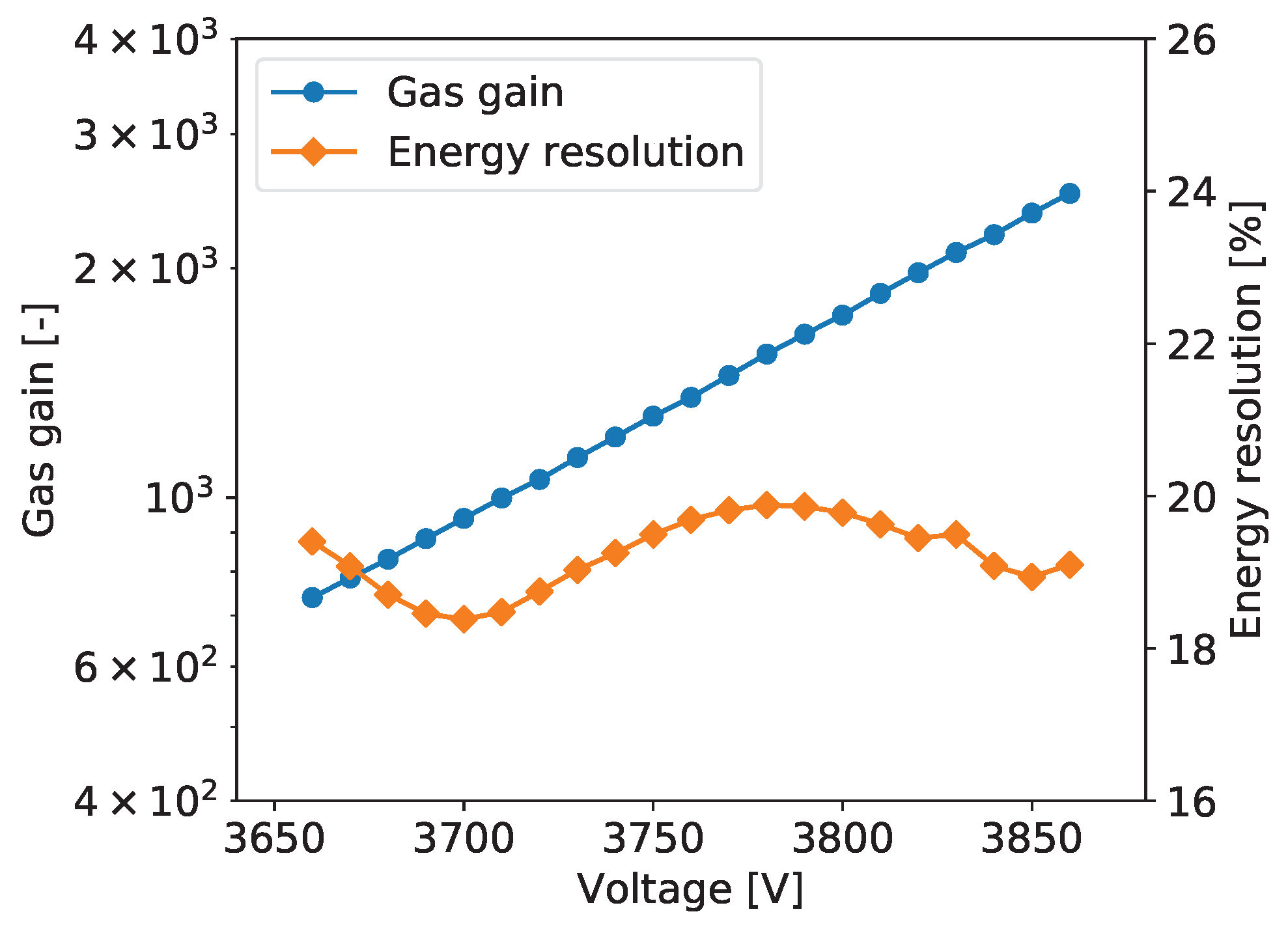
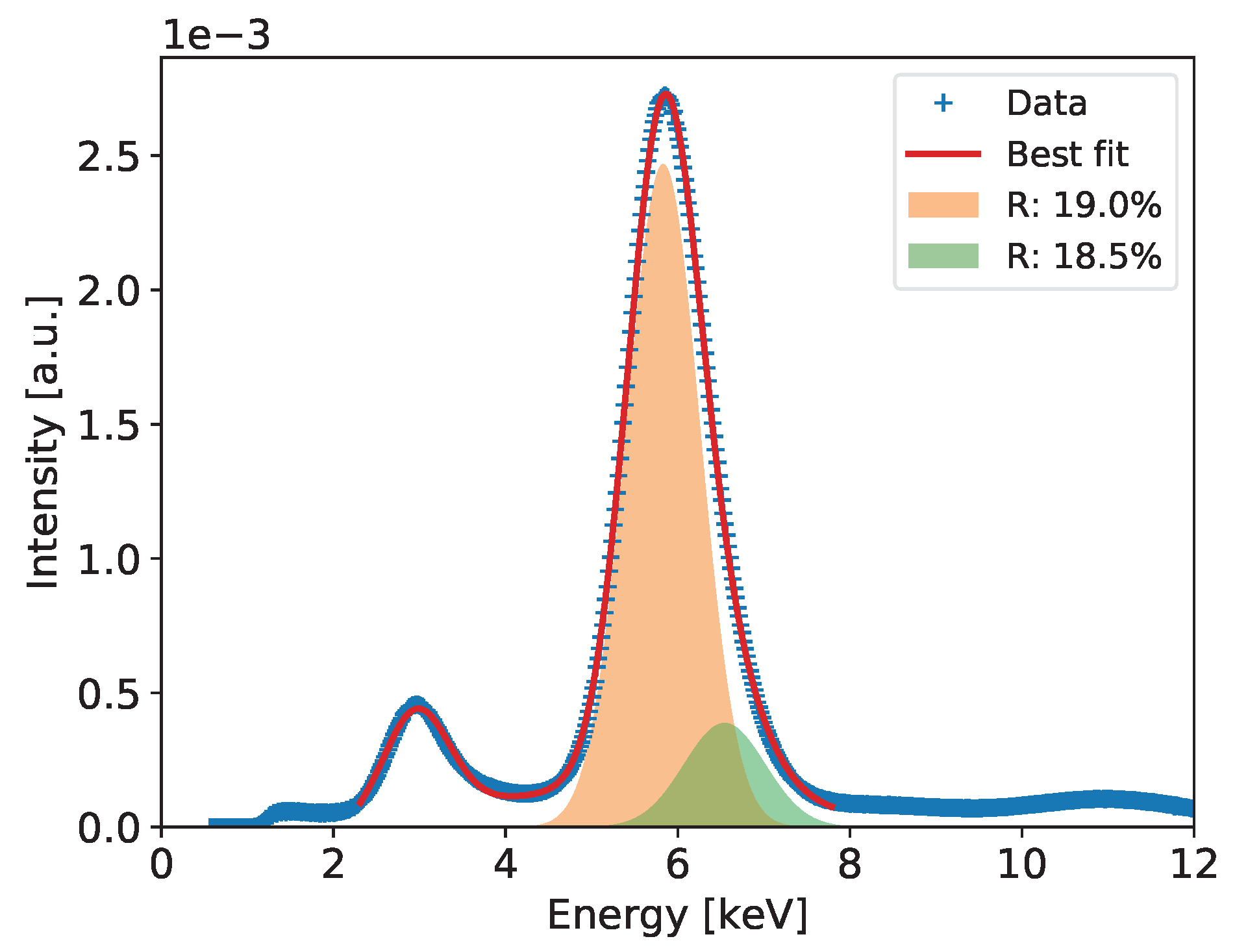
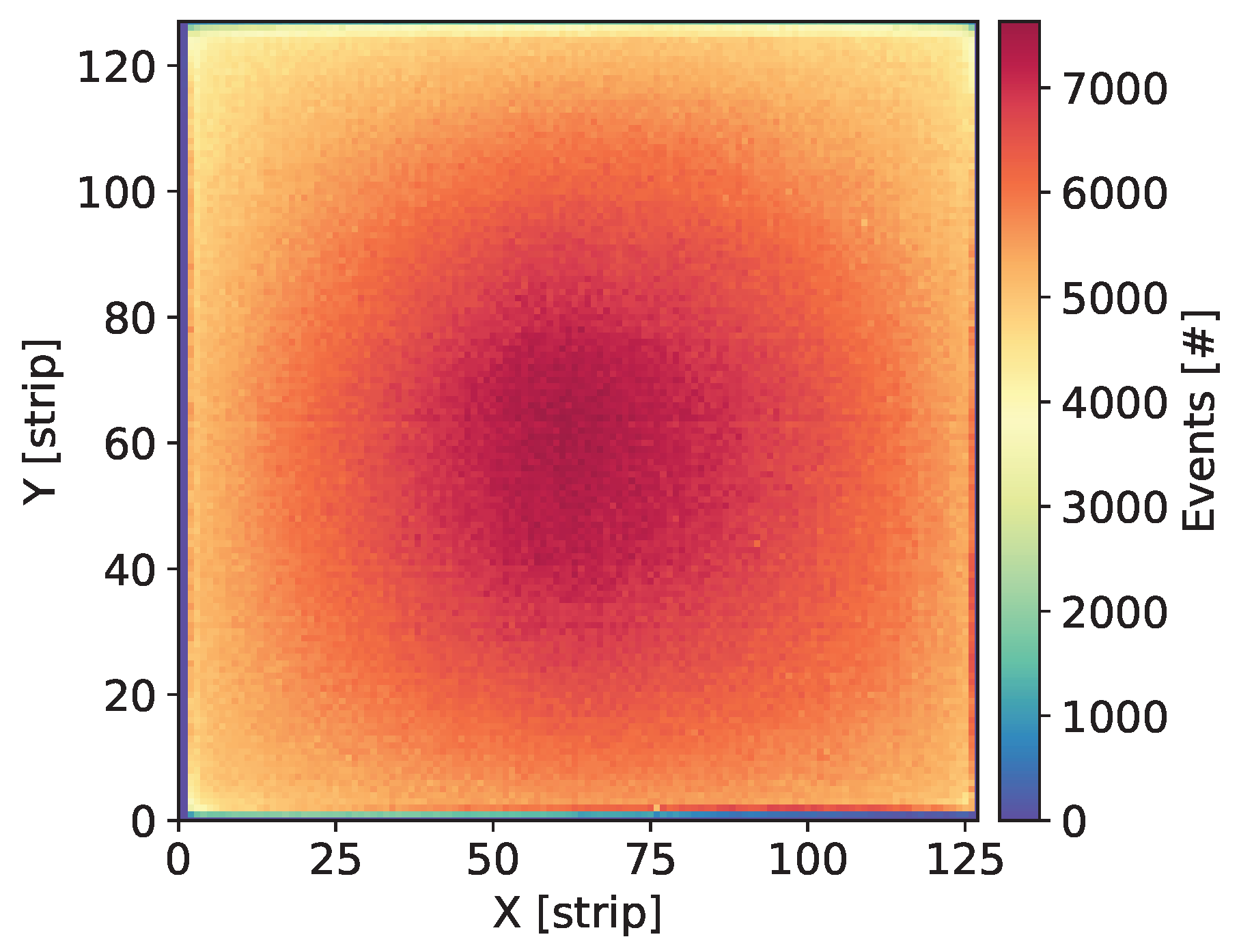
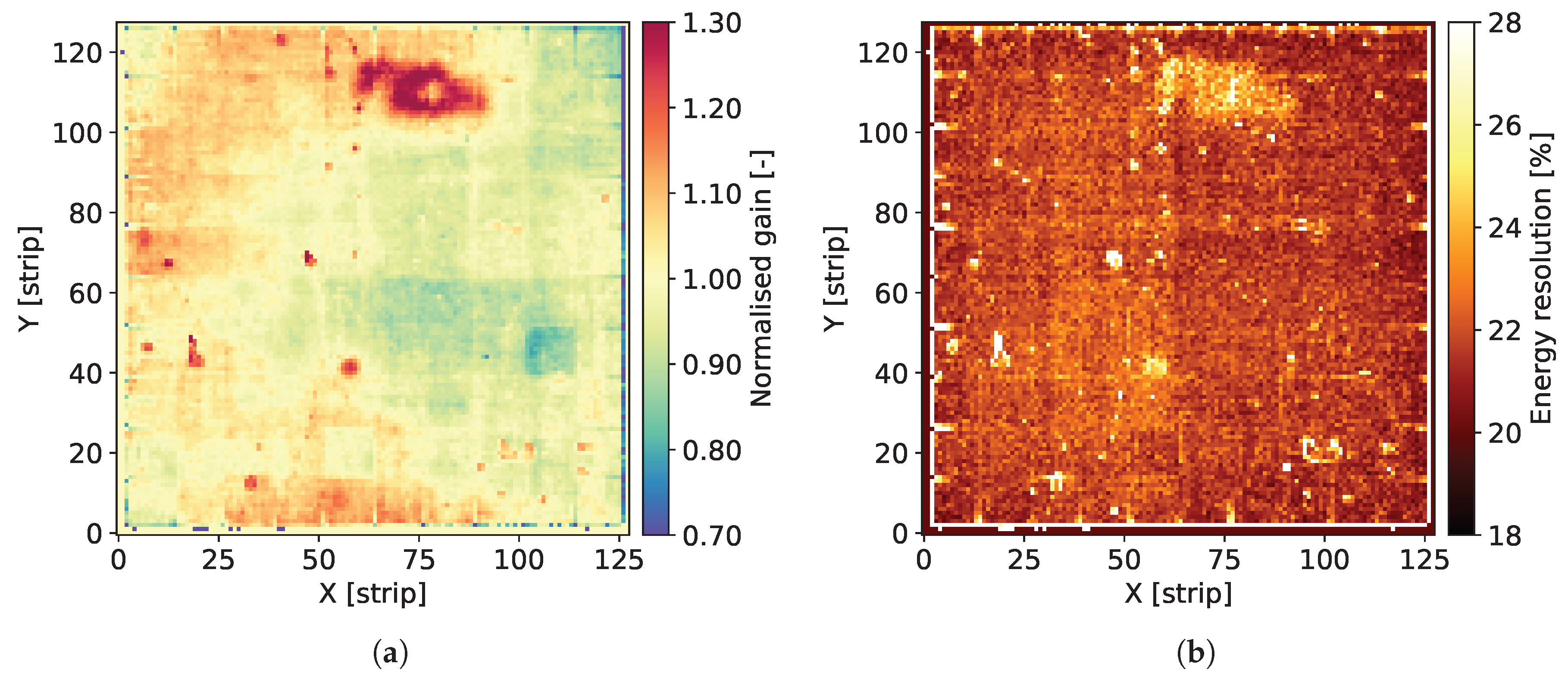

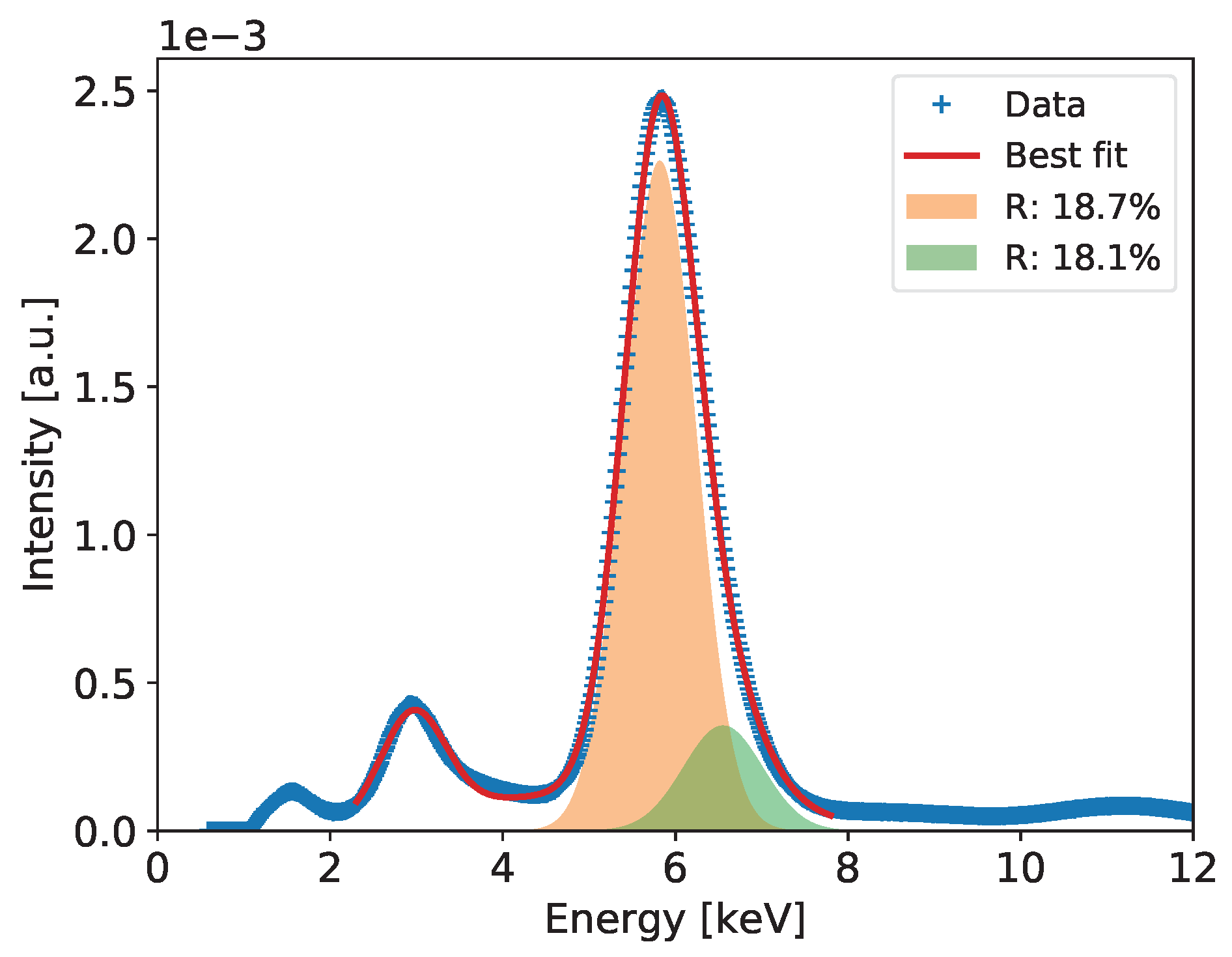
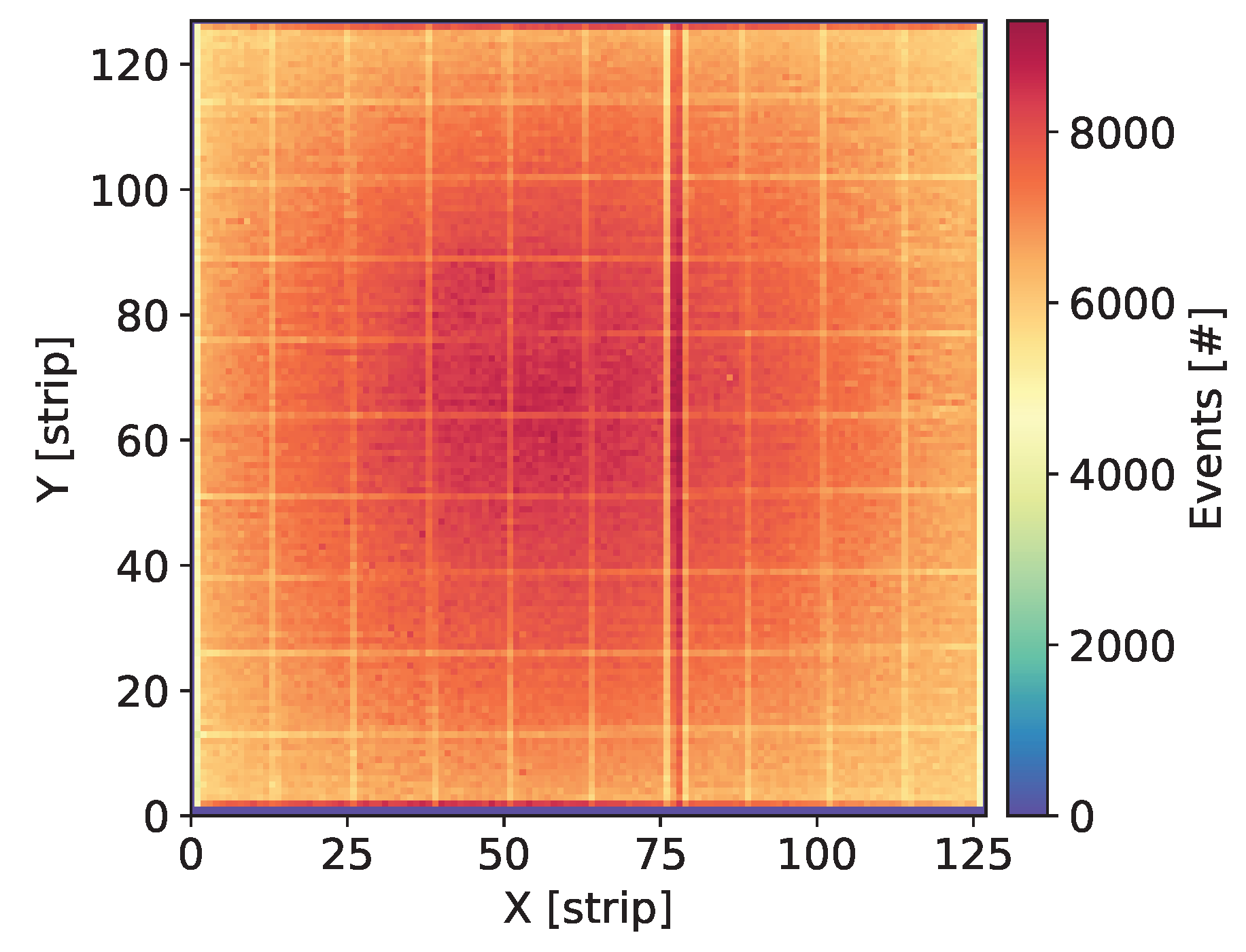
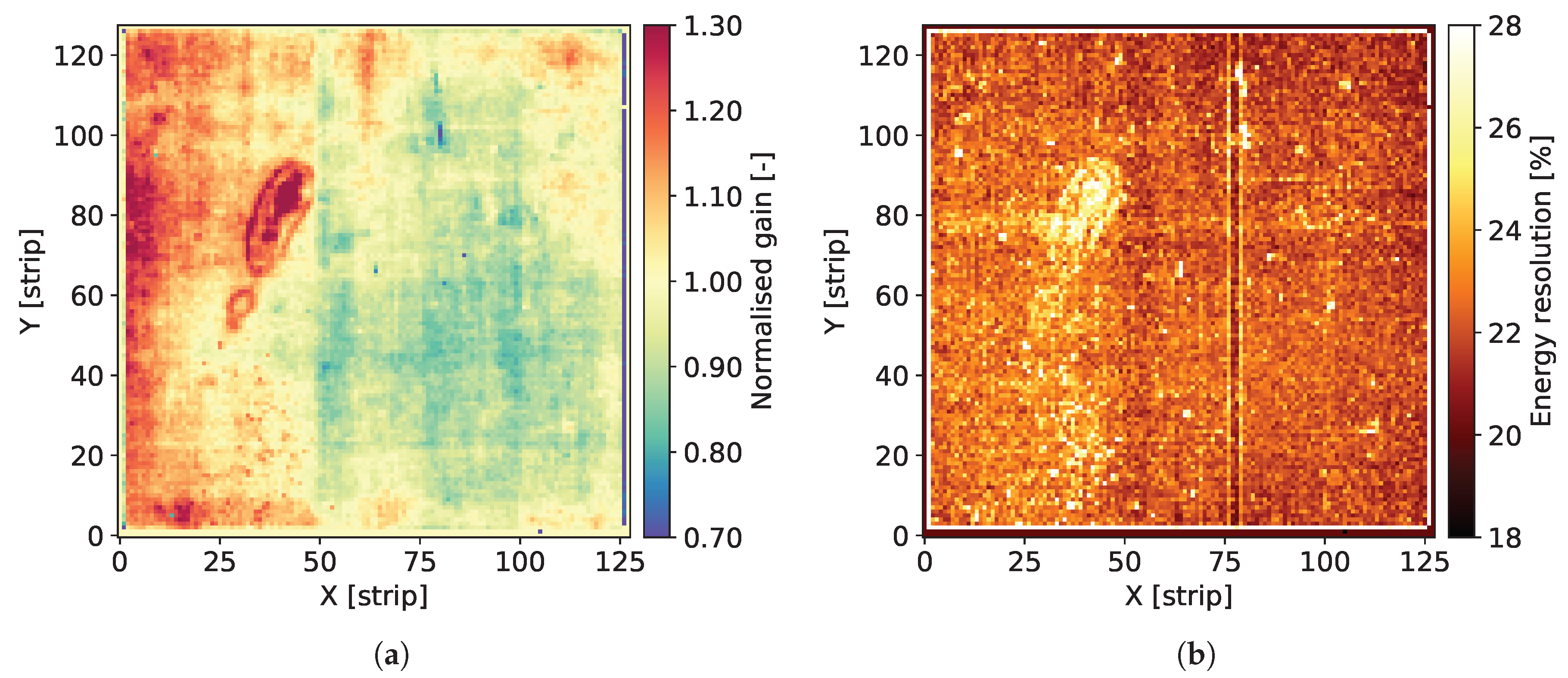
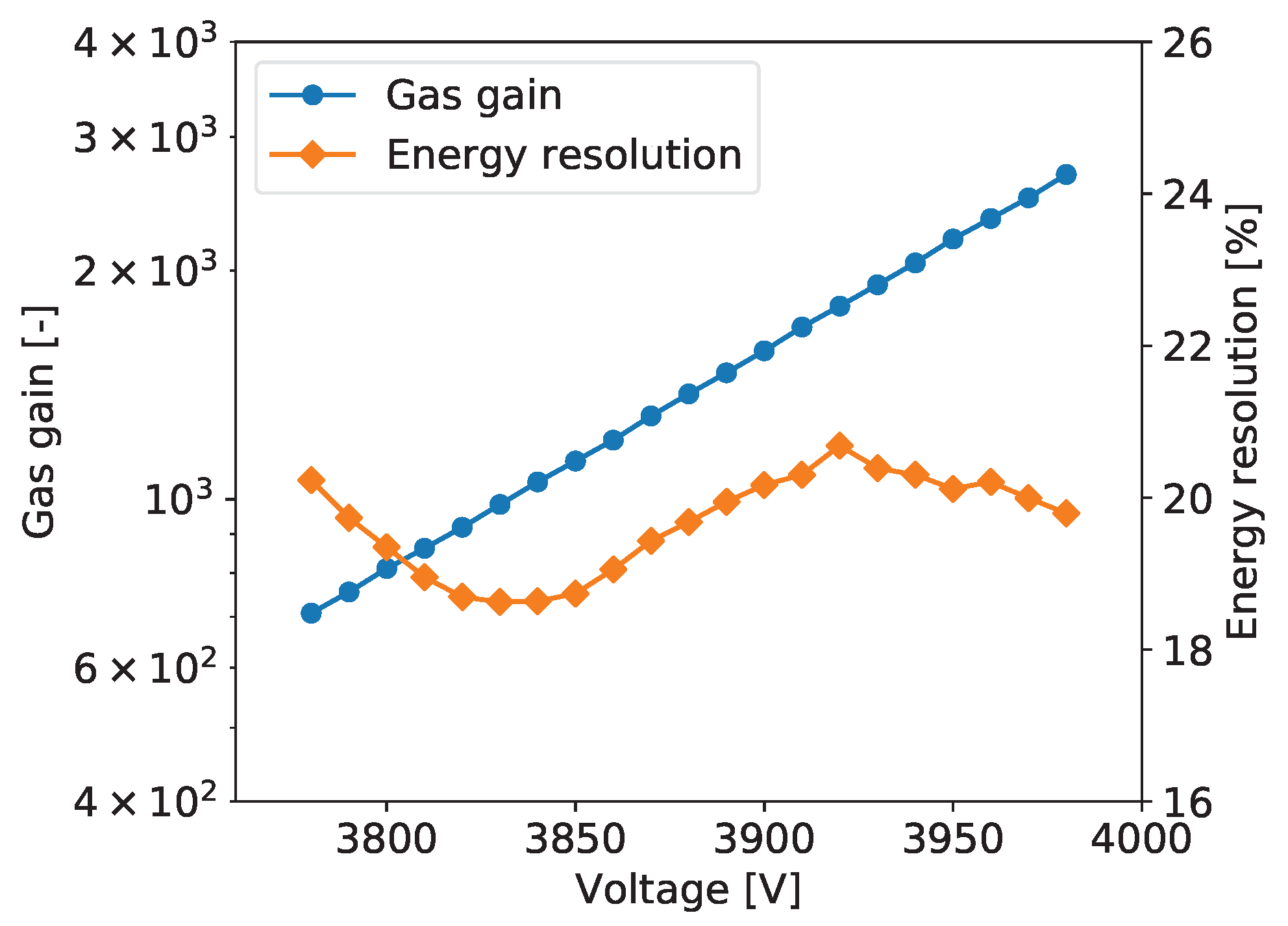
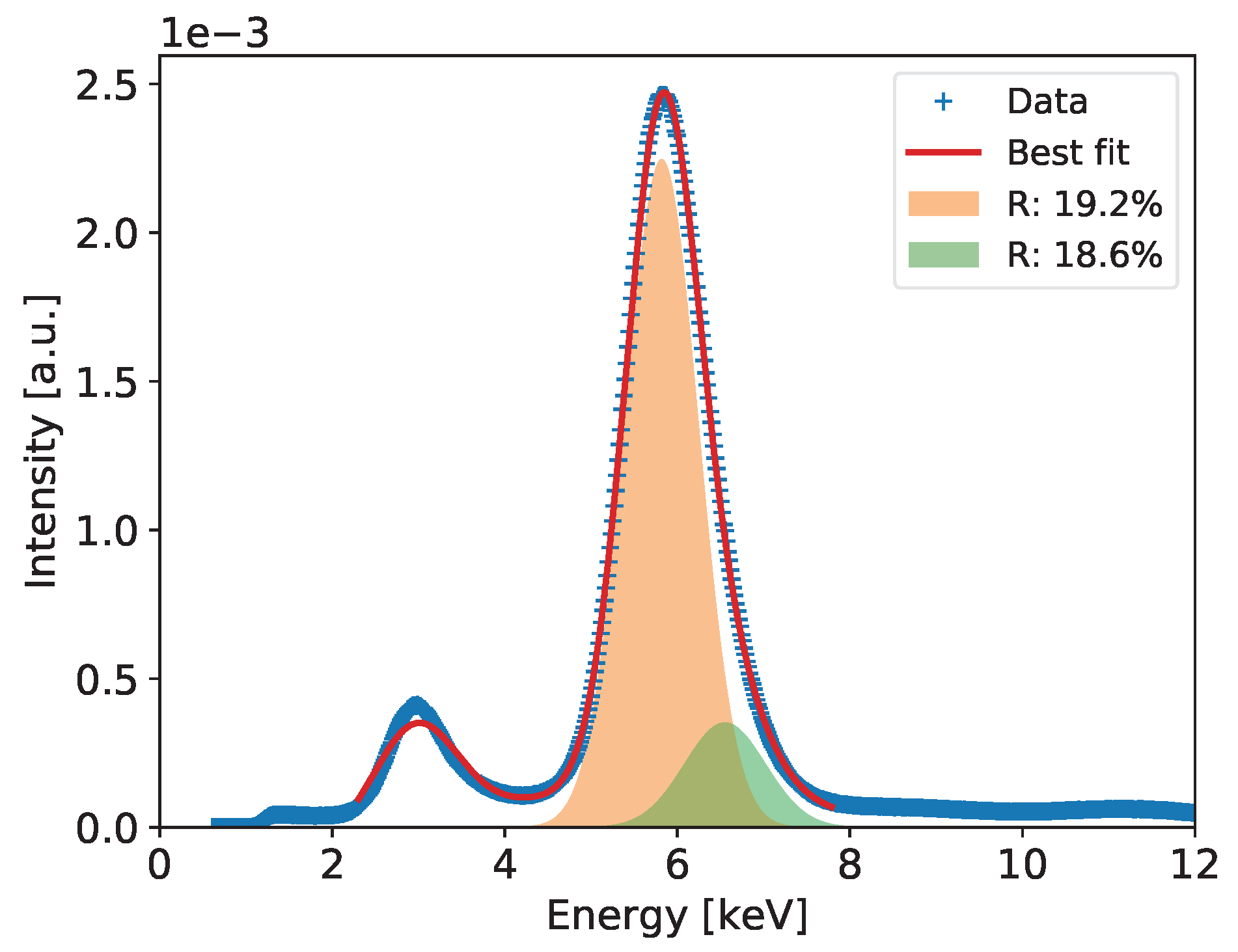



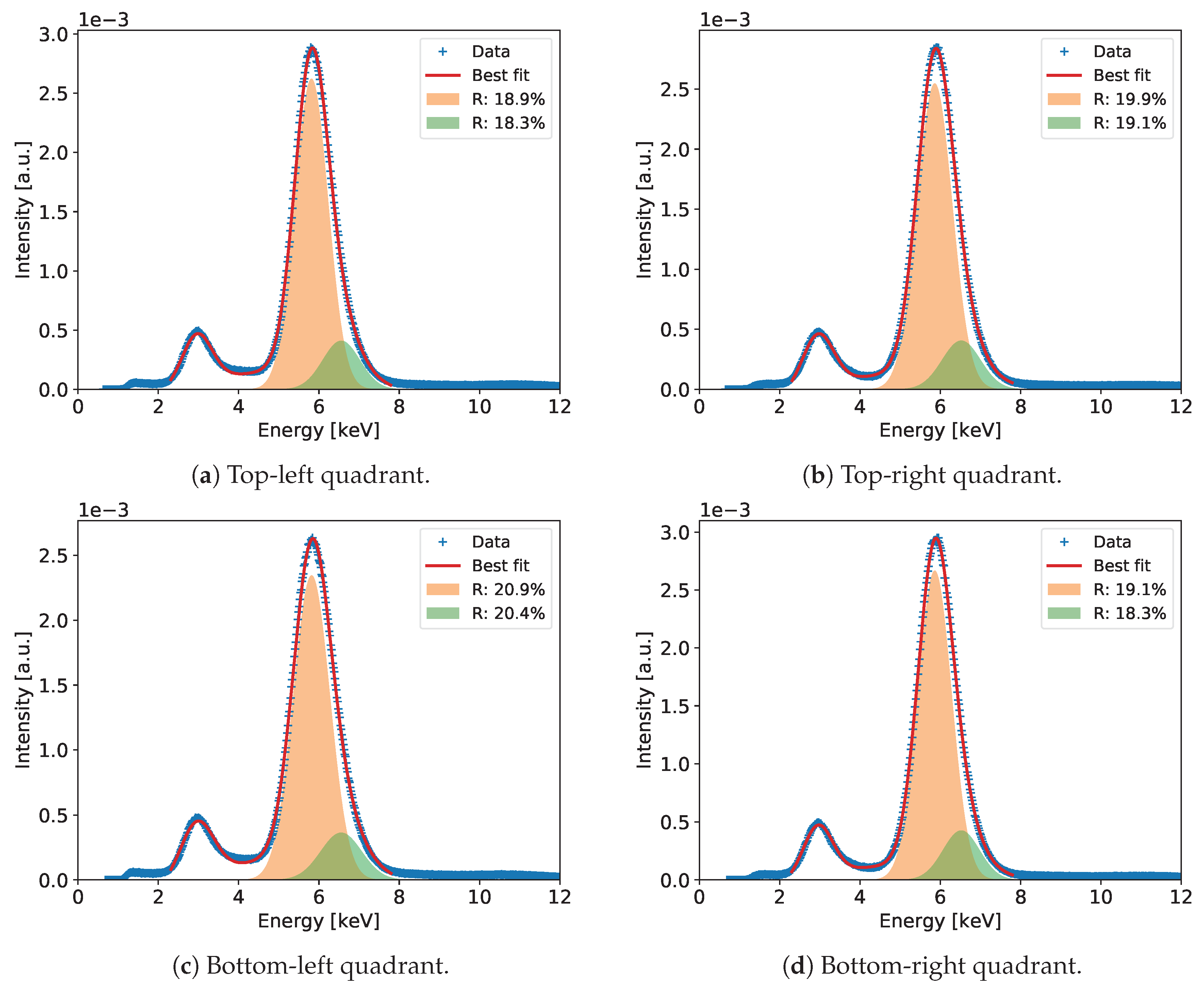
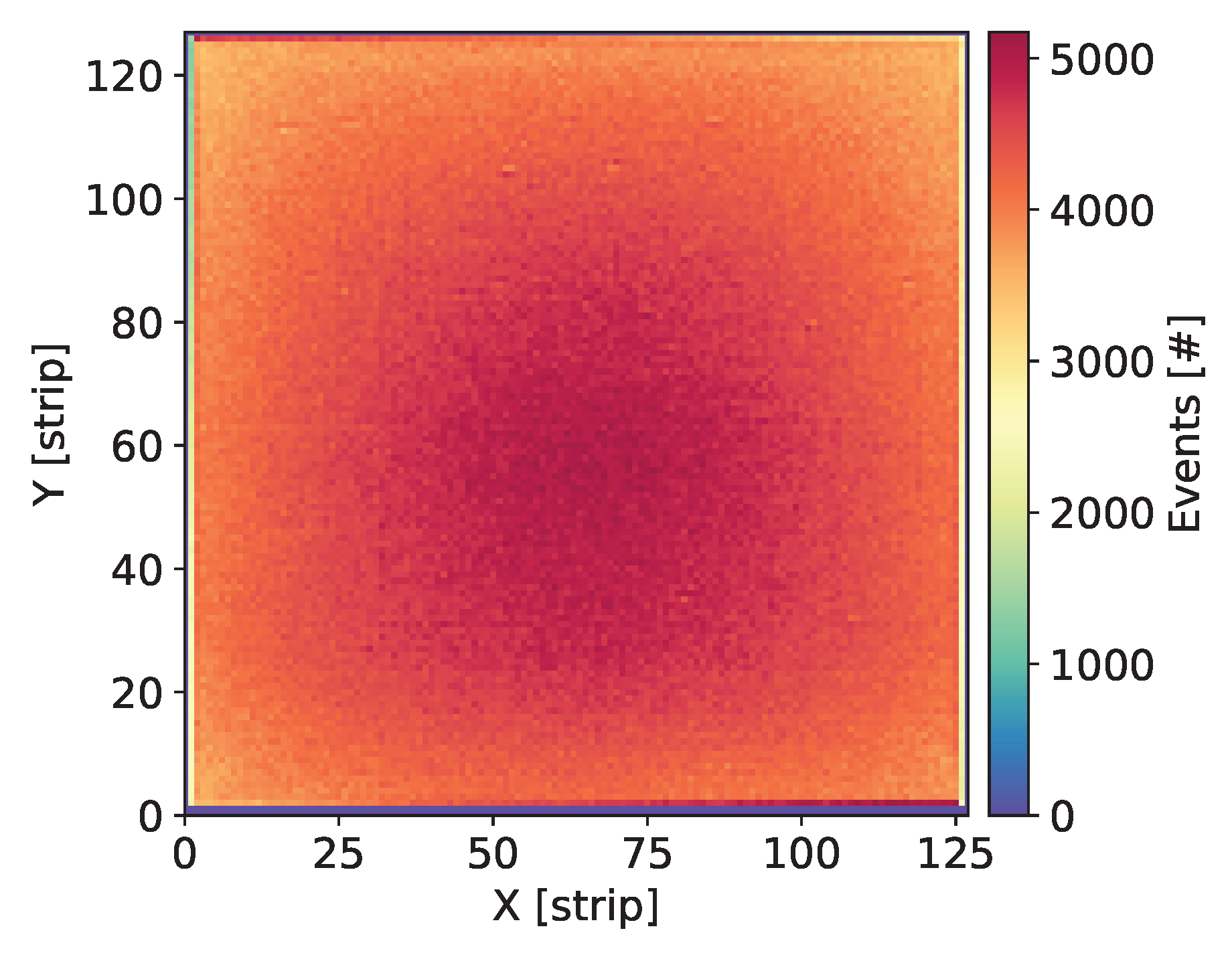
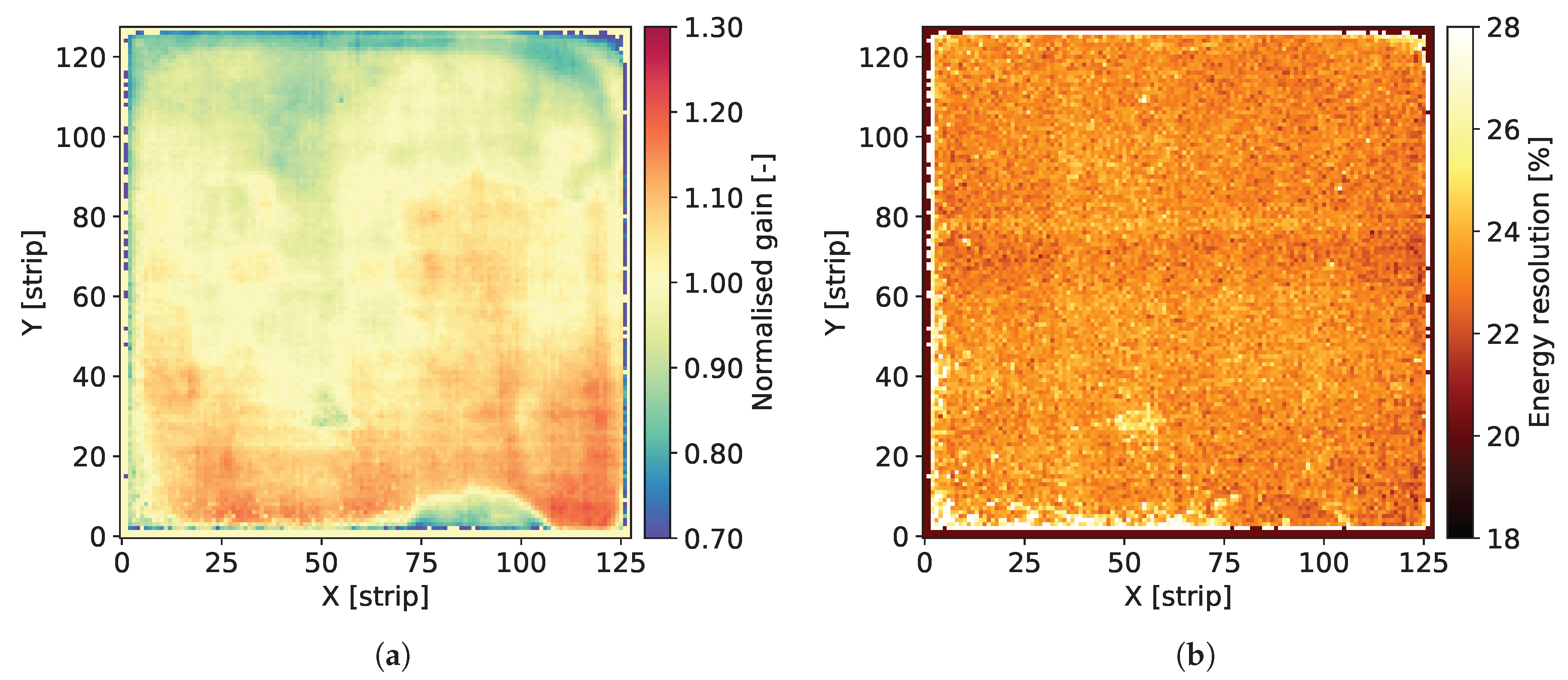
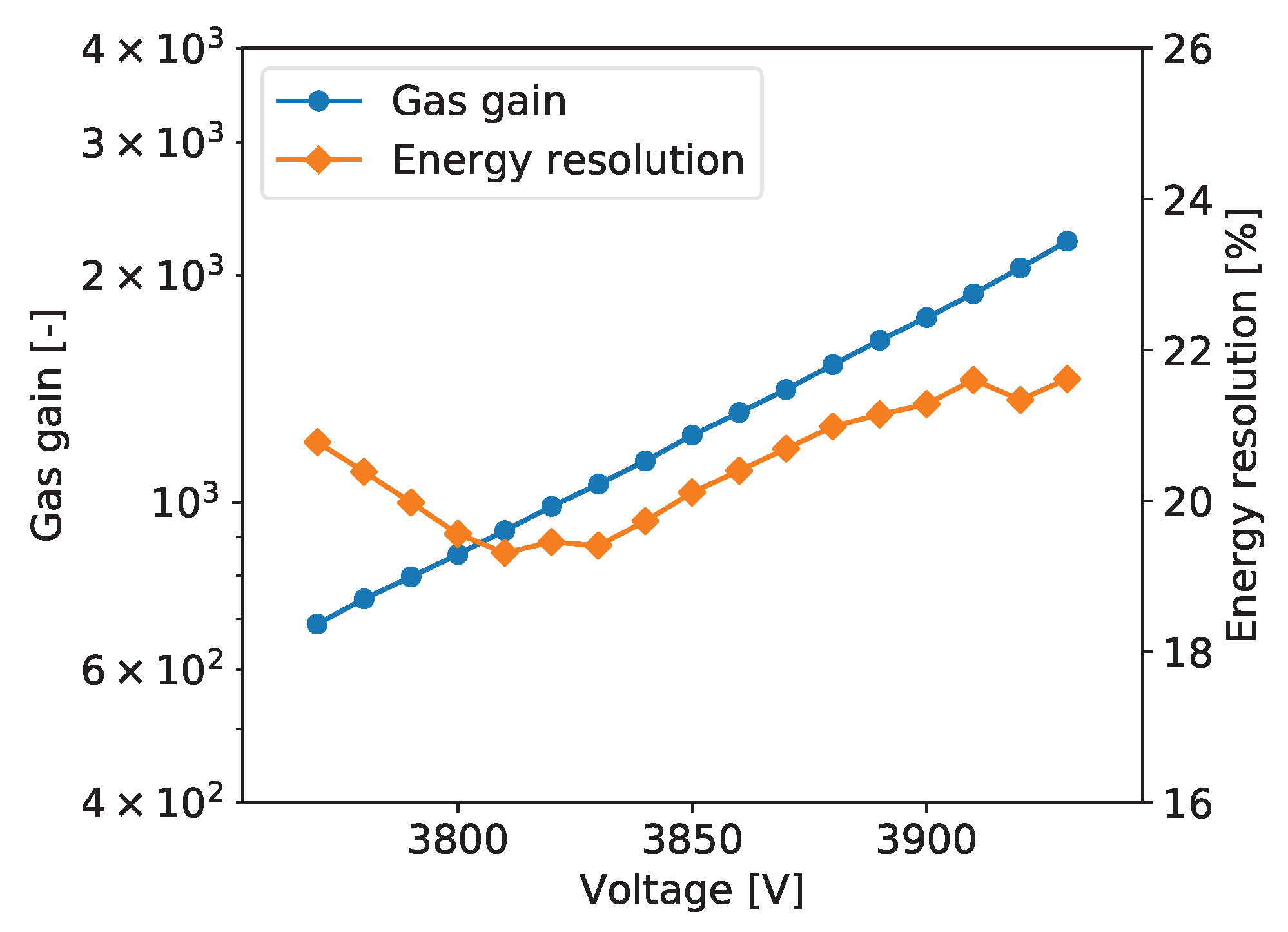


| Detector Label | Drift Type | GEM Foil Type |
|---|---|---|
| Cr 10 nm | Cr 10 nm | |
| Al 5 µm | Cr 10 nm | |
| Cr 100 nm | Cr 100 nm | |
| Cr 100 nm | Cr 100 nm | |
| Cr 100 nm | Cr 100 nm | |
| Cu 5 µm | Cu 5 µm |
| Detector | Energy Resolution for 5.90 keV [%] |
|---|---|
| 19.0 | |
| 18.7 | |
| 19.2 | |
| 20.9 | |
| 18.9 | |
| 19.1 | |
| 19.9 | |
| 20.0 |
© 2020 by the authors. Licensee MDPI, Basel, Switzerland. This article is an open access article distributed under the terms and conditions of the Creative Commons Attribution (CC BY) license (http://creativecommons.org/licenses/by/4.0/).
Share and Cite
Mindur, B.; Fiutowski, T.; Koperny, S.; Wiącek, P.; Dąbrowski, W. Investigation of Copper-Less Gas Electron Multiplier Detectors Responses to Soft X-rays. Sensors 2020, 20, 2784. https://doi.org/10.3390/s20102784
Mindur B, Fiutowski T, Koperny S, Wiącek P, Dąbrowski W. Investigation of Copper-Less Gas Electron Multiplier Detectors Responses to Soft X-rays. Sensors. 2020; 20(10):2784. https://doi.org/10.3390/s20102784
Chicago/Turabian StyleMindur, Bartosz, Tomasz Fiutowski, Stefan Koperny, Piotr Wiącek, and Władysław Dąbrowski. 2020. "Investigation of Copper-Less Gas Electron Multiplier Detectors Responses to Soft X-rays" Sensors 20, no. 10: 2784. https://doi.org/10.3390/s20102784
APA StyleMindur, B., Fiutowski, T., Koperny, S., Wiącek, P., & Dąbrowski, W. (2020). Investigation of Copper-Less Gas Electron Multiplier Detectors Responses to Soft X-rays. Sensors, 20(10), 2784. https://doi.org/10.3390/s20102784





